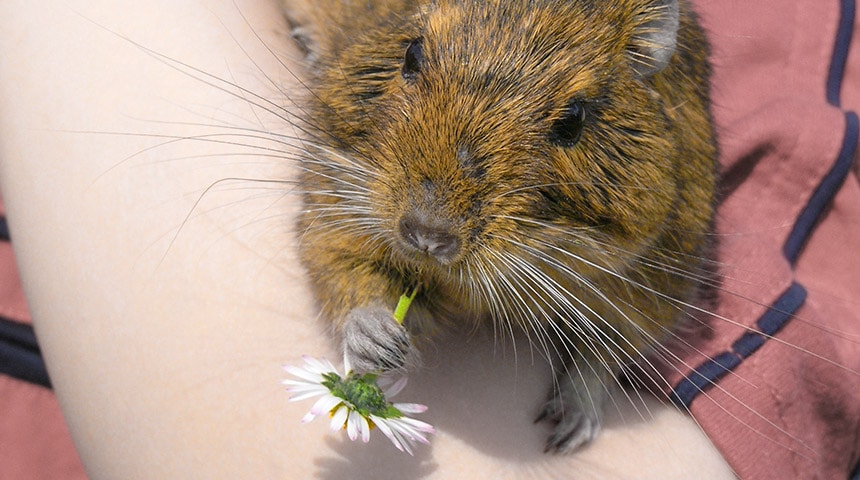
The degu is a rodent in the same family as guinea pigs and chinchillas. Native to the mountain plateaus of Chile in South America, it has a life expectancy of 5 to 8 years. In the wild, they live in social groups of 2 to 5 females for every 1 to 2 males. Degus are usually diurnal (active during the day), although some individuals may be nocturnal or crepuscular. They are social and docile; but as small, active rodents, they are not recommended for young children.
Like the chinchilla, the degu has orange-enamelled incisors. All of its teeth are subject to continuous growth, so it's important to feed your degu with a high-fibre diet, consisting mainly of hay, to ensure proper wear of the teeth. Please consult our detailed recommendation sheet to make sure you provide a suitable diet for your degu.
Common Illnesses
Dental Issues
Dental issues are the most common medical problem affecting degus. They are usually the consequence of a low-fibre diet. All degus' teeth are subject to continuous growth throughout their lives. A diet that lacks fibre will result in inadequate wear of the teeth, leading to dental malocclusion. The clinical signs secondary to dental malocclusion are numerous: reduced appetite, changes in eating habits, hypersalivation, weight loss, watering eyes, or hair-pulling behaviour.
The management of dental disorders is multifaceted, but mainly involves tooth trimming, which has to be performed under general anesthesia at regular intervals.
Tail Scalping
Several species of rodents, including the degu, have the ability to escape if grabbed by the tail. This means that if you grab a degu by the tail, its skin will remain in your hands, allowing it to escape.
In such cases, amputating the tail is the only option.
Cataracts
Uni- or bilateral opacification of the crystalline lens(es) is common in elderly degus. The development of cataracts is usually associated with an excessively carbohydrate-rich diet (diet based on grains and cereals), which may be associated with diabetes.
If your degu requires medical care that cannot be performed at your usual clinic, we will transfer its file to our specialized team working at the Centre Vétérinaire Laval.

